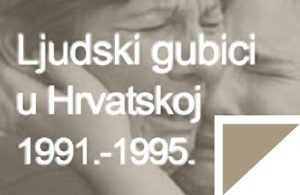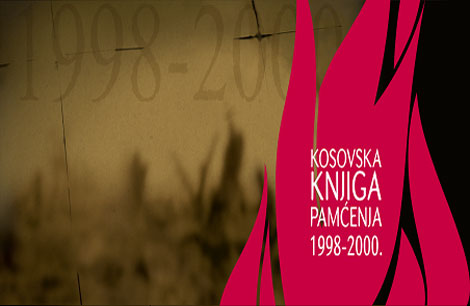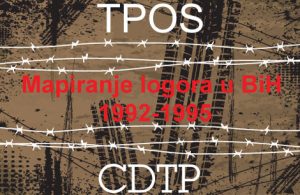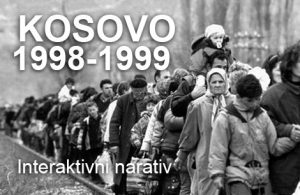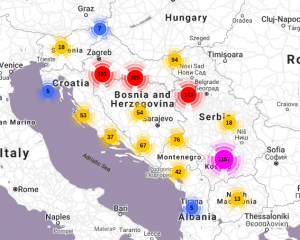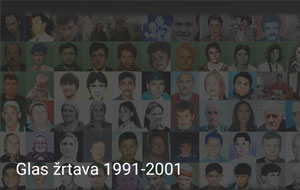
25.03.2015.
HLC: Demystifying „NATO Aggression and the Fight Against Shiptar Terrorists“
In 2000, the Government of the Federal Republic of Yugoslavia announced the publication of „The Heroes of the Fatherland,“ a valuable, though incomplete, record of military victims in connection with the war in Kosovo. The record includes the names of military war victims – 275 members of the Yugoslav Army (VJ) and Serbia’s Ministry of the Interior (MUP) – who were killed in NATO attacks on the territory of Serbia, Montenegro and Kosovo.
The Humanitarian Law Center (HLC) has the same information, having recorded the individual members of the VJ/MUP of Serbia who lost their lives from shells, bombs and missiles fired by NATO aircraft. The HLC and HLC-Kosovo have documented that NATO attacks killed a total of 758 people: 205 Serbian civilians, 220 Albanian civilians, 28 civilians of Roma and other nationalities, 30 members of the KLA, and 275 members of the VJ/MUP of Serbia. On the territory of Serbia, 260 people were killed; in Montenegro, 10; and in Kosovo, 488. Among the fallen members of the VJ/MUP, 108 were younger than 25 years of age—the majority of them soldiers doing regular military service. In Serbia, most of the civilians were killed in Surdulica – 29 of them; in Belgrade, 17 RTS employees; in Nis, 19 civilians; in Aleksinc, 15; and in Grdelicka klisura, 12, when NATO hit a train in motion. Among the victims of the NATO bombing in Kosovo, we have listed the 77 ethnic Albanian civilians who were killed in Korisa, when NATO targeted a former military facility where these persons were held overnight on their way to Albania, on the orders of Serbian forces; 64 Albanians were killed in Bistrazin while, at the orders of Serbian forces, the column was moving towards Albania; and 29 Albanians, 7 Serbs, and 6 members of the VJ who were killed on the bridge in the village of Luzane, while traveling by bus to Pristina.
According to the HLC and HLC-Kosovo data, assembled by the application of three methods of data collection, in the period from March 20 to June 14, 1999, Serbian forces, under the pretext of „defending Serbian territory from NATO aggression and Shiptar terrorists“, killed 6,901 Albanians who were not participating in hostilities. During the same period, the KLA had killed 328 civilians and 136 Serbian Roma and other non-Albanians who were not involved in the armed conflict. In the clashes between the VJ/MUP and the KLA, 1,204 members of the KLA were killed and 559 members of the VJ and the MUP of Serbia.
The data clearly show that the leadership of the Republic of Serbia responded to NATO attacks by severe and massive retaliation against the Albanian civilian population—expelling and killing civilians, and burning whole villages and houses. During the NATO attack, in the Gjakova municipality alone VJ and Serbian MUP units killed 909 Albanian civilians, in Orahovac 577, in Mitrovica 362, in Vucitrn 389, in Pec 496, in Glogovac 640, in Pristina 413, in Prizren 414, in Suva Reka 351, etc. On a single day, April 27, 1999, Serbian forces in the village of Meja killed 349 Albanian villagers, most of whose bodies were found in mass graves at the police training site in Batajnica near Belgrade. More than 260 villagers who were hiding in the forests Sutice, Vrbovca and Cikatova were killed during a „ survey of the terrain“ on April 30 and May 1, 1999 by members of the VJ’s 37th Motorised Brigade, whose then commander is the present Chief of Staff of the Serbian Army, General Ljubisa Dikovic. In the same period, the KLA killed a total of 328 Serbian civilians and 136 Roma civilians, among them 32 Serbian civilians in Suva Reka, 25 in Djakovica, 22 in Pristina, 4 Orahovac, and 5 in Gnjilane.
On the occasion of the 16th anniversary of the NATO bombing of FRY, the HLC calls upon the Government of Serbia to accept the fact that, during the 78 days of NATO intervention, the VJ/MUP of Serbia, under the pretext of „defending Serbian territory from NATO aggressors and Shiptar terrorists,“ committed serious war crimes against the Albanian civilian population. Out of respect for the 7,000 Albanian civilian casualties, the army and the police ought to dismiss the generals and other high-ranking officers whose subordinates killed rather than protected civilians.
The war-time authorities of Serbia, some of whose generals still hold office in the institutions of the army and police, must not be absolved of responsibility for the death of the 758 people who were killed in the NATO attacks, especially the 453 civilians. The politics advocated at the time by Slobodan Milosevic, the highest representatives of state institutions, and of the army and police generals, was the very cause of the NATO bombing. It was this kind of politics that turned the army into marauding hordes, while the generals were sending young soldiers to war, at least 100 of them younger than 25 years of age, who were never to return to their families. After 16 years it is time to address the responsibility for the bombing of the country and the deaths of 758 people in the context of these facts.
Mass killings, March 20 – June 14, 1999
Location Date Albanians Serbs Roma et al.
| Meja and Korenica | 04/27/1999 | 349 | – | – |
| Djakovica | 04/1-2/1999 | 94 | ||
| Celina and Mala Krusa | 03/25-26/1999 | 189 | ||
| Velika Krusa | 03/25-26/1999 | 180 | 14 | |
| Stutica, Vrbovac,
Cikatovo |
04/30-04/01/1999 | 262 | ||
| Izbica | 03/28/1999 | 117 | 1 | |
| Rezala | 04/05/1999 | 43 | ||
| Vucitrn | 05/22/1999 | 72 | ||
| Gornja Studimlja | 05/02/1999 | 108 | ||
| Kraljane | 04/02-041999 | 93 | ||
| Ljubenic | 04/01/1999 | 55 | ||
| Korisa (NATO) | 05/13/1999 | 77 | ||
| Bistrazin (NATO) | 04/14/1999 | 64 | ||
| Luzane (NATO) | 05/01/1999 | 29 | 13 |
Source: The Database Kosovo Memory Book, March 25, 2015
Contact Person: Natasa Kandic, Project Coordinator, Kosovo Memory Book
